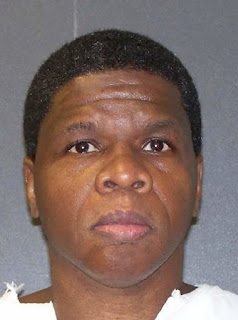| Advertisement |
Duane E. Buck barged into his girlfriend’s Texas home after she broke up with him and killed her and a friend. Later that morning in July 1995, he fired a rifle at his stepsister, who survived because the bullet just missed her heart.
His guilt was never in doubt, and Mr. Buck, 54, who is black, was sentenced to death by lethal injection. But concerns about testimony from a psychologist in the sentencing phase — that black people were more dangerous than white people — raised concerns about the role of race in the jury’s decision and led the case to reach the Supreme Court.
In February, the Supreme Court ordered a new sentencing trial for Mr. Buck, calling the psychologist’s testimony racist. In a Houston courtroom on Tuesday, Mr. Buck pleaded guilty to two counts of attempted murder, including the shooting of his stepsister, in a deal that exchanged the death penalty for a life sentence plus two 60-year terms.
“This case can accomplish something,” said Kim Ogg, the Harris County district attorney. “It can close a chapter in the history of our courts, in that they will never again hear that race is relevant to criminal justice or to the determination of whether a man will live or die. Race is not and never has been evidence.”
After Mr. Buck’s conviction in 1997, his lawyer called Walter Quijano, a former chief psychologist for the state prison system, to the stand during the sentencing phase. Mr. Quijano, who had evaluated Mr. Buck, testified that race could be a factor in predicting whether a person posed a future danger to society.
A prosecutor asked Mr. Quijano, “The race factor, black, increases the future dangerousness for various complicated reasons — is that correct?”
“Yes,” the psychologist replied.
The psychologist’s answers became the basis of an appeal claiming that Mr. Buck had not been properly represented by his lawyer.
Chief Justice John G. Roberts Jr., writing for the Supreme Court’s majority in a 6-to-2 ruling, said Mr. Quijano’s testimony “appealed to a powerful racial stereotype — that of black men as ‘violence prone.’”
Mr. Buck will be moved from death row in Texas, where more than 230 inmates await lethal injection, and he will be eligible for parole in 2035. Ms. Ogg said her office would work to ensure he is never granted release.
Over the years, Mr. Buck had an unusual advocate in his stepsister, Phyllis Taylor, who had forgiven him and had argued for his release from death row. Ms. Taylor said in a statement on Tuesday she was thankful that Ms. Ogg had reached a deal to avoid another sentencing trial.
“The thought of going through another trial was just too much to bear,” Ms. Taylor said.
Source: The New York Times, Matthew Haag, October 4, 2017
⚑ | Report an error, an omission, a typo; suggest a story or a new angle to an existing story; submit a piece, a comment; recommend a resource; contact the webmaster, contact us: deathpenaltynews@gmail.com.
Opposed to Capital Punishment? Help us keep this blog up and running! DONATE!
"One is absolutely sickened, not by the crimes that the wicked have committed,
but by the punishments that the good have inflicted." -- Oscar Wilde
but by the punishments that the good have inflicted." -- Oscar Wilde








0 comments: